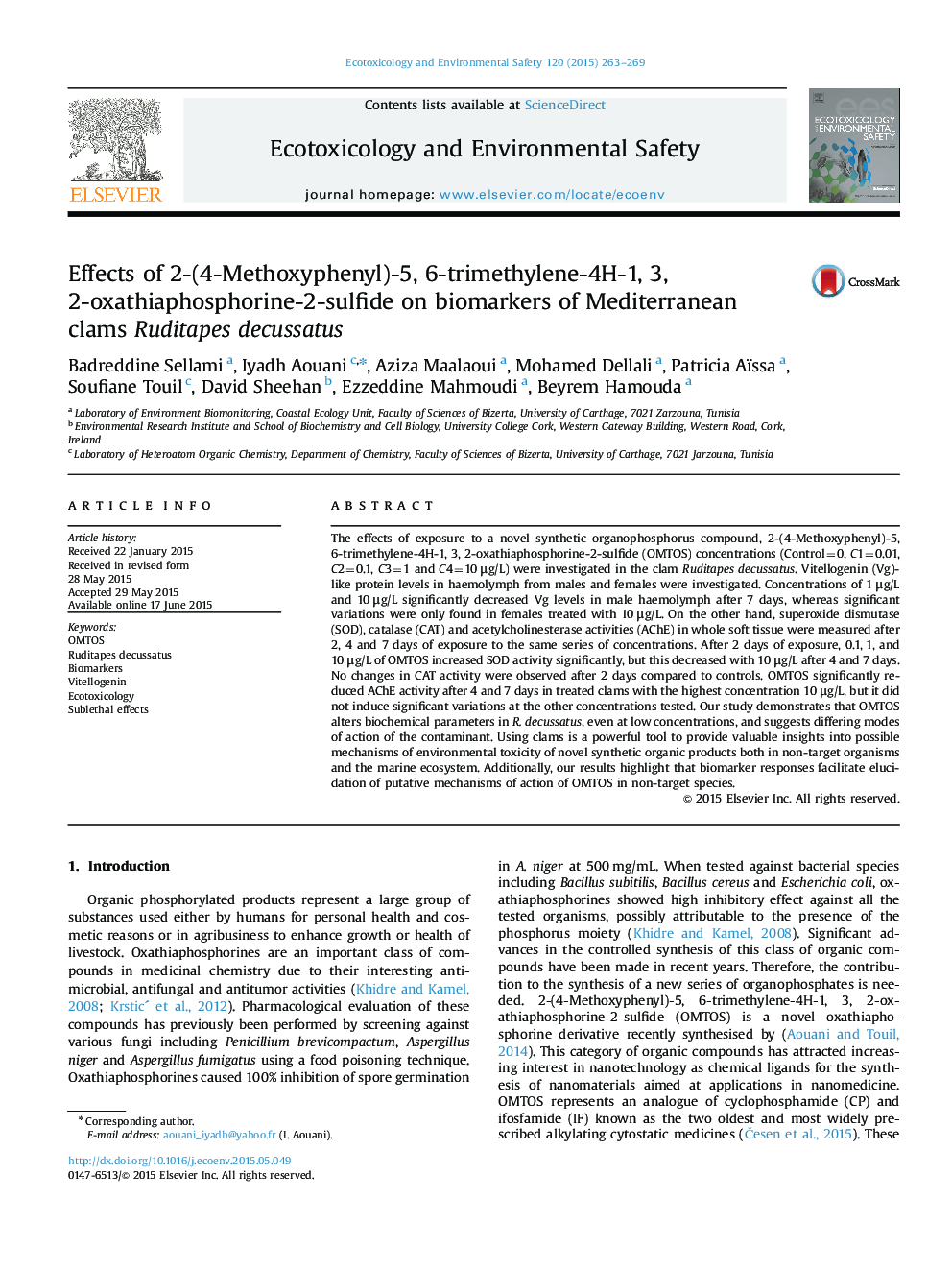| کد مقاله | کد نشریه | سال انتشار | مقاله انگلیسی | نسخه تمام متن |
|---|---|---|---|---|
| 4419379 | 1618943 | 2015 | 7 صفحه PDF | دانلود رایگان |

• We assessed toxicity of new organic phosphorylated products (OMTOS).
• Changes were observed in biochemical and physiological responses.
• OMTOS induces Vg-like protein levels in males and females.
• OMTOS induces biomarkers on Ruditapes decussatus.
• Both approaches give new vision to risk assessment of Pharmaceutical products.
The effects of exposure to a novel synthetic organophosphorus compound, 2-(4-Methoxyphenyl)-5, 6-trimethylene-4H-1, 3, 2-oxathiaphosphorine-2-sulfide (OMTOS) concentrations (Control=0, C1=0.01, C2=0.1, C3=1 and C4=10 μg/L) were investigated in the clam Ruditapes decussatus. Vitellogenin (Vg)-like protein levels in haemolymph from males and females were investigated. Concentrations of 1 μg/L and 10 μg/L significantly decreased Vg levels in male haemolymph after 7 days, whereas significant variations were only found in females treated with 10 μg/L. On the other hand, superoxide dismutase (SOD), catalase (CAT) and acetylcholinesterase activities (AChE) in whole soft tissue were measured after 2, 4 and 7 days of exposure to the same series of concentrations. After 2 days of exposure, 0.1, 1, and 10 μg/L of OMTOS increased SOD activity significantly, but this decreased with 10 μg/L after 4 and 7 days. No changes in CAT activity were observed after 2 days compared to controls. OMTOS significantly reduced AChE activity after 4 and 7 days in treated clams with the highest concentration 10 μg/L, but it did not induce significant variations at the other concentrations tested. Our study demonstrates that OMTOS alters biochemical parameters in R. decussatus, even at low concentrations, and suggests differing modes of action of the contaminant. Using clams is a powerful tool to provide valuable insights into possible mechanisms of environmental toxicity of novel synthetic organic products both in non-target organisms and the marine ecosystem. Additionally, our results highlight that biomarker responses facilitate elucidation of putative mechanisms of action of OMTOS in non-target species.
Journal: Ecotoxicology and Environmental Safety - Volume 120, October 2015, Pages 263–269